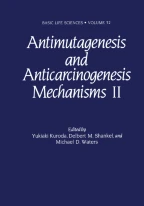
Synthetic or naturally occurring antioxidants such as butylated hydroxyanisole (BHA), butylated hydroxytoluene (BHT), propyl gallate sodium L-ascorbate, and α-tocopherol have been widely used as food additives in various processed foods to prevent auto-oxidation of fatty acids. In addition, many naturally occurring antioxidants are present at appreciable levels in plants. In the light of studies which showed that antioxidants lack mutagenic activity and indeed even inhibit mutagenesis induced by carcinogens (13), they have been considered safe for use as food additives. In fact, since they have further been observed to inhibit chemical carcinogenesis in various organs when administered to rats concurrently with carcinogens (5,6,17), they have been considered as anticarcinogenic agents. However, BHA was recently found to be carcinogenic in the rat forestomach (9), and when antioxidants were given to rats after carcinogen exposure, they enhanced carcinogenesis in some organs while exerting an inhibitory influence in others (5–8). Therefore, antioxidants have both hazardous and nonhazardous effects in rodents, and by analogy also possibly in man.
This is a preview of subscription content, log in via an institution to check access.